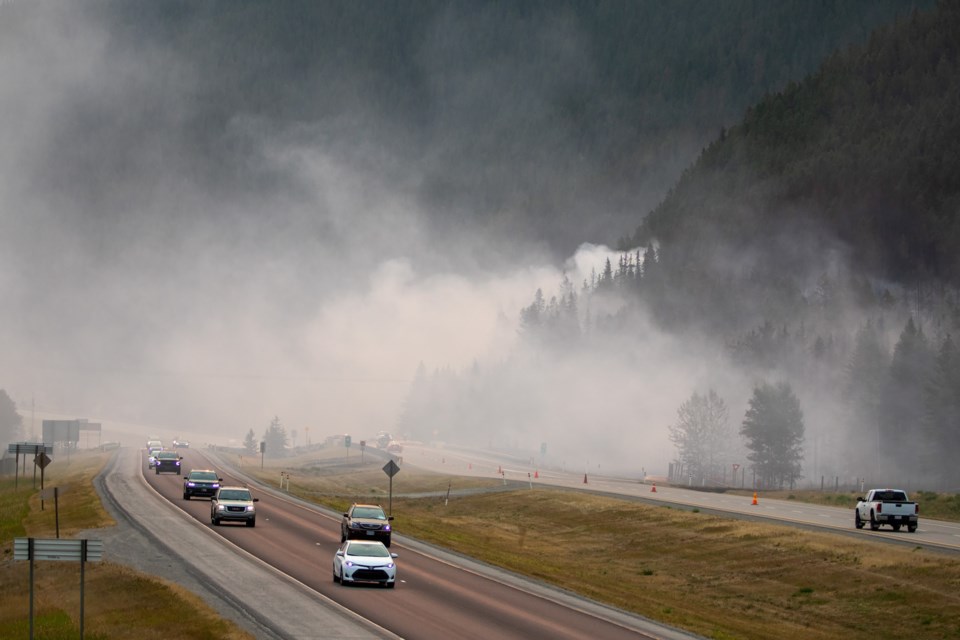BOW VALLEY – The province of Alberta is gearing up for the 2022 wildfire season.
With the wildfire season in Alberta running from March 1 to Oct. 31, wildland firefighters and equipment have been deployed across the province in preparation for the upcoming wildfire season.
“We’re ready for whatever this summer throws at us,” said Nate Horner, Alberta’s minister of Agriculture, Forestry and Rural Economic Development in a press release. “We continue to explore new technology and innovative wildland firefighting programs to evaluate what we need in Alberta’s wildfire management tool kit.”
The wildfire hazard is highest in the spring when fuels like trees and grass can be extremely dry and flammable after the snow has melted. Almost all spring wildfires are human-caused.
In the 2021 wildfire season, 1,308 wildfires burned a total of 52,955 hectares in the fire protection area. More than 60 per cent of 2021 wildfires last year were human-caused.
Two wildfires east of Canmore last summer had some Bow Valley communities on alert.
A wildfire that began July 23 near Lac des Arcs along the Trans-Canada Highway burned about 4.4 hectares of forest.
Then about a month later in mid-August, a fire was sparked on the south side of the highway by Dead Man’s Flats, leading to the closure of a section of Canada’s main highway for several hours and burning about six hectares.
In both cases, dozens of firefighters on the ground, as well as helicopters and water-bombers, fought to bring the fires under control.
A North American seasonal fire assessment was issued on Feb. 14 for the spring.
Compiled by the U.S. National Interagency Fire Centre and Natural Resources Canada and Mexico’s Servicio Meteorlogico Nacional, the report indicates March is still too early for significant fire activity in Canada.
“However, without significant precipitation in the southern Prairie provinces, drought conditions are expected to continue with some fire activity possible in March,” stated the seasonal fire outlook.
According to the fire forecast, April will likely bring normal to below normal temperatures for the western half of the country.
Models are leaning towards above average precipitation in much of British Columbia, below average precipitation in the southern half of Quebec, and normal precipitation elsewhere.
“While still early in the fire season, interior British Columbia and the southern Prairie provinces may be subject to spring fire activity,” according to the report.
“The area from northeastern British Columbia extending southeast to the Alberta-Montana border into southern Saskatchewan has below average snow depths, with much of the area snow-free.”
While precipitation in most of western Canada has been normal to above normal over the past month, southern Alberta and southwestern Saskatchewan have received little precipitation.
“Western Canada observed well below normal temperatures in early January, but recent warming in western Canada has resulted in significant melting and runoff, which will exacerbate exceptionally dry conditions in the western prairies with potential for increased fire risk this spring,” states the report.
One of the critical factors influencing significant fire potential for March and April is La Niña, with conditions forecast to continue into spring and have a major impact on the next few months’ weather and climate.
Drought will also play a role, with the report noting that while drought conditions eased slightly in west-central Alberta, the southern half of Alberta has seen little change with severe drought conditions persisting.
Although the snow-free period in parts of the southern Prairie Provinces continues, Natural Resources Canada has not noted significant fire activity.
“However, southern Alberta and Saskatchewan are currently at risk for potential grass fires given the above average temperatures and dry conditions in early February,” states the forecast.
Parks Canada said fire preparedness plans are not yet finalized for Banff, Yoho and Kootenay national parks so the agency was not in a position to comment at this time.




